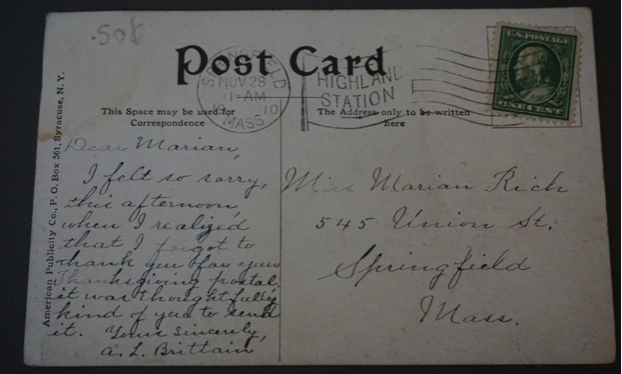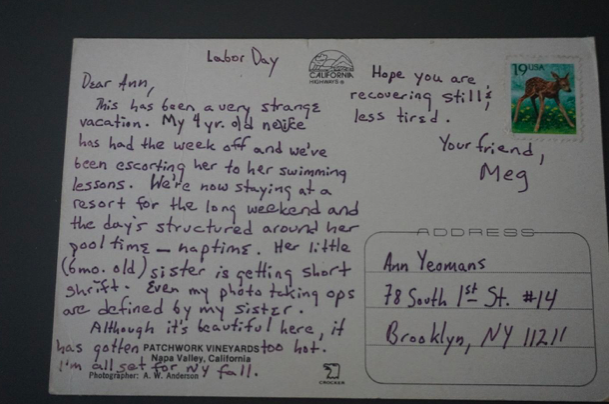Epistolary Picture Books with Julie Falatko
We are so excited to have Julie Falatko join us today to share information about Epistolary Picture Books!
credit: Photo by Elle Darcy
Julie Falatko writes books for children. She is the author of many books, including Snappsy the Alligator (Did Not Ask to Be in This Book), which was named one of the ABA’s best books for young readers for 2016, was featured in People magazine, and was read online by David Harbour of “Stranger Things,” and the Two Dogs in a Trench Coat chapter book series, illustrated by Colin Jack (Scholastic), for which she received the Denise McCoy Literacy Award.
I wrote Yours in Books as a challenge to myself. Could I tell a whole story only in letters? I loved the idea of characters getting to know each other through correspondence.
First I had to ask myself some questions, and these are questions anyone writing an epistolary book should consider.
Why is it in letters (or emails, or sticky notes, or airplanes with banners flying behind)? Epistolary books are fun, but there has to be a reason that the story only makes sense told via correspondence. In Yours in Books, Owl doesn’t want to leave his treetop home to visit Bessie Squirrel’s bookstore, so he orders books by mail.
How do your characters treat the correspondence? Is it strictly professional? What are they trying to convey? What do they want? Does their motivation change as the story goes on? The correspondence between Owl and Bessie in Yours in Books is formal at first but gets increasingly casual as they get to know each other.
Is what they write in the letters the truth? There is an opportunity to have the words of the correspondence contrast with the reality shown in the illustrations – often in hilarious ways. This is a huge advantage to writing an epistolary picture book, because you know some of the story will be told in the illustrations.
One of my favorite things to look for in junk shops is the box of postcards. I love blank postcards to send to people, but I really love postcards that have already been sent. There are so many stories in these small spaces – you know, just like picture books.
Here are some of my favorites. Each of them has layers of story and character hiding behind the words on the card. Your epistolary books should be just as full of juicy unwritten story as these are.
Dear Marian, I felt so sorry, this afternoon, when I realized that I forgot to thank you for your Thanksgiving postal, it was thoughtfully kind of you to send it. Yours sincerely, A.L. Brittain
Ok. So this person is writing a thank you to Marian for her Thanksgiving letter, and is feeling terrible because of neglecting to reply to her. But. It’s posted November 28. I looked it up – Thanksgiving in 1910 was November 24. Unless this is about her letter from 1909, there’s something more here. Does she always demand an immediate reply? Did she send a Thanksgiving postcard weeks early? Does she send postcards all the time and A.L. Brittain is trying to get rid of her? Is this some form of flirtation?
The Grand Canyon is a wonderful sight to see. Maybe you will see it someday. Dad.
I love this one. On the one hand, he may very well be truly wishing his daughters will see the Grand Canyon some day. On the other hand, there is some fatherly pressure here. Get out! See the world! Maybe visit Arizona every once in a while!
Labor Day. Dear Ann, This has been a very strange vacation. My 4 yr. old niece has had the week off and we’ve been escorting her to her swimming lessons. We’re now staying at a resort for the long weekend and the day’s structured around her pool time – naptime. Her little (6 mo. old) sister is getting short shrift. Even my photo taking ops are defined by my sister. Although it’s beautiful here, it has gotten too hot. I’m all set for NY fall. Hope you are recovering still & less tired. Your friend, Meg
I love the story of this one, the idea of going on a family trip, traveling across the country, only to have everyone revolving around the 4-year-old’s schedule. Even her photo ops are regulated. So good.
Dear E- Where the will is not strong and the flesh is quite weak, the mere mention of food makes the tummy go tweek. Your nice invitation I can hardly refuse. You’ve so little to gain – and I’ve nothing to lose. And so I will close – wishing most truly – “The Top of the Mornin’ to All”—Mr. Dooley
WHO IS THIS GUY? Can you imagine receiving a response to your dinner invitation entirely in rhyme? What do you think Eugenia’s response was? Because it could very well be either delight or wishing she has not, in fact, invited Mr. Dooley to dinner.
The challenge of writing an epistolary book is in stripping away everything but the correspondence. There’s no room for describing the scene or the characters. But we’re lucky as picture book authors, because we know the illustrators can tell that part of the story. Writing entirely in correspondence is like dialog that has taken one step back – it’s not what your characters are saying, but what they think they should be saying, how they think they should sound. An epistolary book is a challenge to create one story in the words themselves, and to have those words hint at layers of story that aren’t being told (just like in all those postcards from the junk shop).






